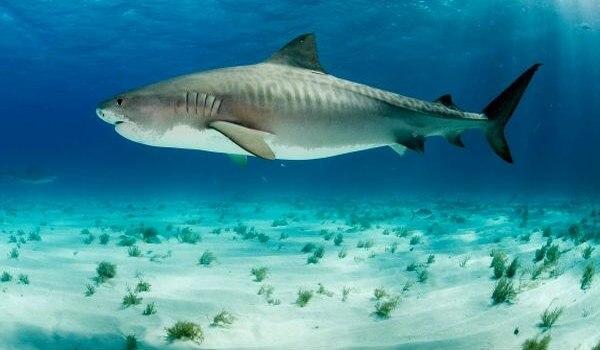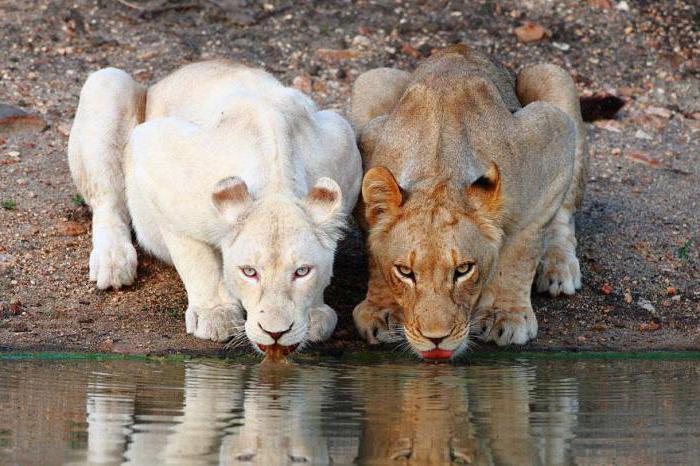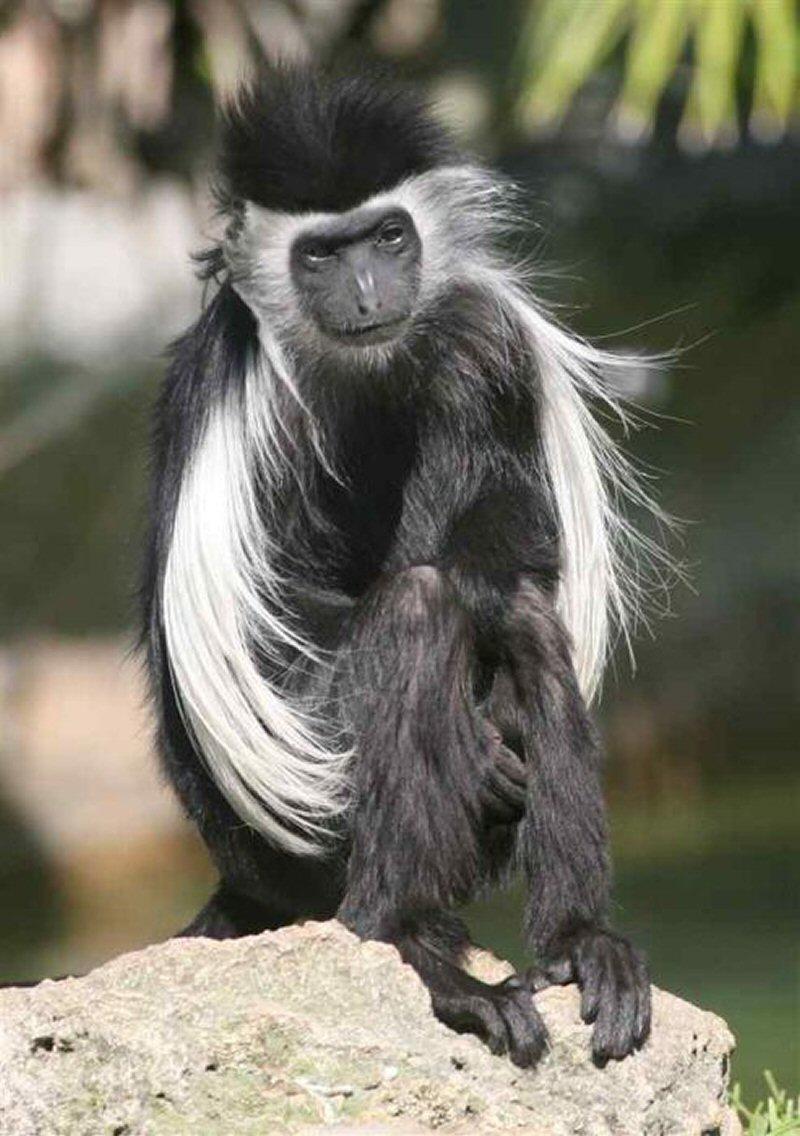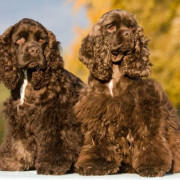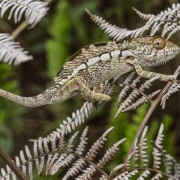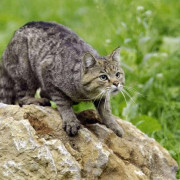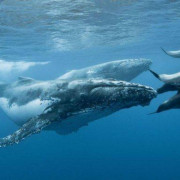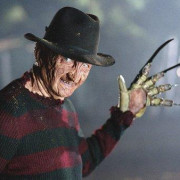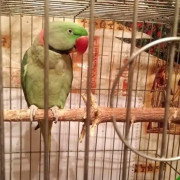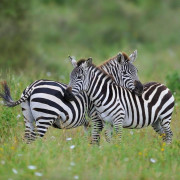Zoo
Содержание:
Endangered Grevy’s Zebra Born at Lincoln Park Zoo
August 20, 2020
Foal Born on August 14 Is a Female; Continues to Surpass Milestones
Chicago (August 18, 2020) – Lincoln Park Zoo is excited to announce the arrival of a striped addition this summer. On August 14, 13-year-old Adia, a Grevy’s zebra, gave birth to a healthy foal after a gestation period lasting more than a year.
The newborn foal has yet to be named. Her stripes are reddish-brown and will gradually turn black. The youngster will continue to nurse for about 275 days. Newborn zebra foals can walk after 20 minutes and run after just an hour—a critical survival adaptation in the wild for this endangered grazing prey species.
“It’s hard not to smile when seeing this energetic foal,” said Curator Dan Boehm. “Not only is the zebra foal a joy to visit, but its birth is significant for this endangered species.”
Adia was recommended to breed with 9-year-old Wester as part of the Grevy’s Zebra Species Survival Plan (SSP), a collaborative population management effort among Association of Zoos and Aquariums (AZA) institutions. This is Adia’s fourth offspring, and her second offspring with sire Wester.
The foal joins three other zebras at the Camel & Zebra area. Grevy’s zebras—named by a French naturalist after the fourth president of France—are the largest of the three zebra species. They are also the world’s largest wild equine, inhabiting semi-arid grasslands in northern Kenya and southern Ethiopia.
This species is endangered in the wild due to hunting and habitat loss.
References
- Animal and Plant Health Inspection Service (APHIS). 2004. Licensing and registration under the animal welfare act: Guidelines for dealers, exhbitors, transporters, and researchers. United States Department fo Agriculture, Animal and Plant Health Inspection Service. Retrieved June 11, 2007.
- Association of Zoos and Aquariums (AZA). What is AZA accreditation?. Association of Zoos and Aquariums. Retrieved June 11, 2007.
- Baratay, E., and E. Hardouin-Fugier. 2002. Zoo: A History of the Zoological Gardens of the West. London: Reaktion. ISBN 1861891113.
- Grech, K. S. 2004. Overview of the laws affecting zoos. Animal Legal & Historical Center. Retrieved June 11, 2007.
- Hahn, D. 2003. The Tower Menagerie. London: Simon & Schuster. ISBN 0743220811.
- Hancocks, D. 2001. A Different Nature: The Paradoxical World of Zoos and Their Uncertain Future. Berkeley: University of Californina Press. ISBN 0520218795.
- Hanson, E. 2002. Animal Attractions: Nature on Display in American Zoos. Princeton: Princeton University Press. ISBN 0691059926.
- Hoage, R. J., and W. A. Deiss (ed.). 1996. New Worlds, New Animals: From Menagerie to Zoological Park in the Nineteenth Century. Baltimore: Johns Hopkins University Press. ISBN 0801851106.
- John Regan Associates (Regan). 2004. Manifesto for zoos. John Regan Associations. Retrieved June 11, 2007.
- Kawata, K. 2002. It will never fly: The ontogeny of zoo biology—Early history of a research journal. International Zoo News 49(3). Retrieved June 11, 2007.
- Kisling, V. N. (ed.) 2001. Zoo and Aquarium History. Boca Raton: CRC Press. ISBN 084932100X.
- Malmud, R. 1998. Reading Zoos. Representations of Animals and Captivity. New York: New York University Press. ISBN 0814756026.
- Norton, B. G., M. Hutchins, E. F. Stevens, and T. L. Maple (eds.). 1995. Ethics on the Ark. Zoos, Animal Welfare, and Wildlife Conservation. Washington, DC.: Smithsonian Institution Press. ISBN 1560985151.
- People for the Ethical Treatment of Animals. 2007. Zoos: Pitiful prisons. People for the Ethical Treatment of Animals. Retrieved June 11, 2007.
- Reichenbach, H. 2002. Lost menageries: Why and how zoos disappear (part 1). International Zoo News 49(3). Retrieved June 11, 2007.
- Tudge, C. 1992. Last Animals in the Zoo: How Mass Extinction Can Be Stopped. Washington, D.C: Island Press. ISBN 1559631589.
Beluga Calf Born at Georgia Aquarium
August 19, 2020
A bundle of joy has arrived at Georgia Aquarium. Whisper, a 20-year-old beluga whale at Georgia Aquarium gave birth to a calf at 3:17 p.m. on Sunday, May 17, 2020. Whisper’s calf weighed 174 pounds at birth and is five feet four inches in length.
“We are so proud of Whisper and overjoyed to welcome her calf to our Georgia Aquarium family,” said Dennis Christen, senior director of zoological operations, mammals and birds at Georgia Aquarium. “We will be there right alongside the calf as it continues to grow and learn from Whisper.”
Whisper had a long labor, but with assistance from the Aquarium’s animal care and health teams she delivered her calf. Both Whisper and her calf are getting much needed rest and time to bond.Georgia Aquarium’s animal care and health teams are monitoring Whisper and her calf around-the-clock. There are still milestones ahead for the little whale over the next several weeks, which are crucial for its development and the bonding experience.
Dr. Tonya Clauss, vice president of animal and environmental health at Georgia Aquarium stated, “Our animal health team is continuing to monitor Whisper and her calf. The coming weeks are important for the calf’s development and there are milestones to meet so we’re giving mom and calf all the support and time they need.”Georgia Aquarium’s other beluga whales, Qinu, Maple, Nunavik, and Imaq are all doing well. They are currently in a separate area of the exhibit and will be introduced to Whisper and her calf when it’s appropriate.
“This birth is important not only for Georgia Aquarium, but all accredited zoological facilities. Our hope is to sustain the beluga whale population in North America so future generations can learn about them,” said Eric Gaglione, vice president of zoological operations at Georgia Aquarium. “Throughout Whisper’s pregnancy we tracked important data about beluga whale gestation that could hopefully make informed conservation decisions about belugas in the wild and their offspring.”
The full birth story, behind-the-scenes moments, and some surprise details will air in an Animal Planet special on May 30, 2020 at 10 p.m. EST. Stay tuned to Georgia Aquarium’s, , and Instagram for updates as the calf continues to grow.
The Aquarium is currently closed to the public due to the COVID-19 pandemic. Once the Aquarium reopens there are numerous factors to consider before opening the beluga whale habitat for public viewing of Whisper and her calf. There may be periods when the calf is not visible, or the habitat is closed.
Appearance
Free monkey’s islands at the São Paulo Zoo
The macaque enclosure at the Zigong People’s Park Zoo, Sichuan, China, photographed by the Asian Animal Protection Network.
Today, many zoos in Europe and North America keep animals in enclosures that attempt to replicate their natural habitats, for the benefit of both resident animals and visitors. They may have special buildings for nocturnal animals, with dim lighting during the day, so the animals will be active when visitors are there, and brighter lights at night to ensure that they sleep. Special climate conditions are created for animals living in radical environments, such as penguins. Special enclosures for birds, insects, fishes, and other aquatic life forms have also been developed.
A petting zoo (also called children’s farms or children’s zoos) features a combination of domestic animals and some wild species that are docile enough to touch and feed. Petting zoos are popular with small children. To ensure the animals’ health, the food is supplied by the zoo, either from vending machines or a kiosk nearby. There are independent and zoo-based petting zoos.
Some zoos have walk-through exhibits where visitors enter enclosures of non-aggressive species, such as lemurs, marmosets, birds, lizards, turtles, and so forth. Visitors are asked to keep to paths and avoid showing or eating foods that the animals might snatch. The animals are not tame.
Курс молодого козла[править]
Здесь мы дадим Вам некоторые общие рекомендации и ответим на часто задаваемые вопросы.
Спариваться надо так!
Когда происходит спаривание? Спаривание происходит во время гона. Гон происходит осенью. Обычно козы и козлы пасутся отдельно друг от друга, но во время гона козлы присоединяются к самкам.
Как правильно вести себя во время гона? Выберите себе козу и бегайте за ней. Бегать рекомендуется на полусгонутых ногах, в позе, выражающей подчинение, потому что если козу что-либо не устраивает в поведении козла, она бьёт его рогами.
Как правильно выбрать козу? Типичной ошибкой начинающего козла является выбор козы по внешним данным (полосочкам на хвосте, окрасу, форме рогов и т. п.)
Выбирать надо ту козу, которая в данный момент наиболее готова к спариванию, ведь Ваша задача — покрыть как можно больше коз, а бегая за козой в ожидании момента, когда она будет готова к спариванию, Вы теряете другие возможности, которые вместо Вас используют другие козлы.
Можно ли драться за козу с другим козлом? Можно, только осторожно: всё-таки Вы козёл, а не олень или лань! Деритесь, отбивайте коз, но, по возможности, без фанатизма.
Можно ли покрывать одну и ту же козу несколько раз? Нужно! Если коза готова к спариванию вторично, это значит, что в первый раз, возможно, не произошло зачатия. Если же зачатие всё-таки произошло, всё равно повторите процедуру, и у Вас будет на 1-2 козлят больше, а ведь именно в этом заключается Ваша задача.
Что делать, если коза не подпускает к себе? Как спариваться? Как убедиться, что козлята Ваши? Это слишком объёмные вопросы, ответить на них в рамках одной странички невозможно
Поэтому мы рекомендуем Вам нижеследующее руководство.
Que fait zooplus ? Questions fréquemment posées
Où trouver une boutique zooplus ?
zooplus est une boutique intégralement en ligne et ne possède pas de magasin physique. Ceci nous permet de stocker en grand nombre de manière rentable et donc de proposer des prix avantageux à nos clients.
zooplus fait-il des bons et des réductions ?
Oui, nous avons régulièrement des offres spéciales et bons de réduction. Vous retrouverez ceux-ci dans la partie bons plans de notre site.
Quel est le temps de livraison d’un colis zooplus ?
En règle générale, nous livrons sous 2 ou 3 jours ouvrés. Pour plus de détails, consultez notre page dédiée aux informations et tarifs de livraison de zooplus.
Panda enclosure at Chiang Mai Zoo
Some zoos concentrate on animals of geographical regions, on animals of aquatic ecosystems, or attempt to exhibit their animals in a different ways, such as safari parks or open-range. Some of these institutions, mainly those who evolved from former amusement parks, connect entertainment elements with exhibiting live animals.
Wild animal parks
Wild animal parks are larger than the classical zoo. The first of this new kind of animal park was Whipsnade Park which opened in 1931 in Bedfordshire, England. This park, owned by the Zoological Society of London, covers 600 acres (2.4 km²) and is still one of Europe’s largest wildlife conservation parks, where animals are kept within sizable enclosures. Since the early 1970s a 1,800-acre parcel (7 km²) in the Pasqual Valley near San Diego also accommodates a remarkable zoo, the San Diego Wild Animal Park that is run by the Zoological Society of San Diego. Another zoo comparable to these wild animal parks is the Werribee Open Range Zoo in Melbourne, Australia, focusing on displaying animals living in a wide open savanna. This 500-acre zoo is managed by the Zoological Parks and Gardens Board which also manages Melbourne Zoo. One of only two American state supported zoo parks is the 535-acre North Carolina Zoo located in Asheboro, North Carolina.
Public aquaria
The first public aquarium was opened in London Zoo in 1853. This was followed by the opening of public aquaria in Europe (for example, Paris 1859, Hamburg 1864, 1868, Berlin 1869, Brighton 1872) and the United States (Boston 1859, Washington 1873, San Francisco 1894, New York 1896). In 2005, the non-profit Georgia Aquarium, with more than 8 million US gallons (30,000 m³; 30,000,000 liters) of marine and fresh water, and more than 100,000 animals of 500 different species opened in Atlanta, Georgia. The aquarium’s specimens include whale sharks and beluga whales.
Animal theme parks
An animal theme park is a combination of an amusement park and a zoo, mainly for entertaining and commercial purposes. Marine mammal parks such as Sea World are more elaborate dolphinariums keeping whale species and containing additional entertainment attractions. Another kind of animal theme park opened in 1998—Disney’s Animal Kingdom in Orlando, Florida. This commercial park established by the Walt Disney Company is similar to wild animal parks according to size (550 acres, 2 km²), but differs in intention and appearance since it contains more entertainment and amusement elements than the classical zoo, such as a stage shows, roller coasters, and mythical creatures. Another famous one is the Marineland in Niagara Falls, Ontario, Canada.
History
Sea lions at the Melbourne Zoo.
Zoos have been known for thousands of years, with well-known collections of animals in ancient Egypt, China, and Rome. An early formulation of a zoo was the menagerie, which has a long history from the Middle Ages to modern times. Menagerie is the term for a historical form of keeping wild and exotic animals in human captivity. The term was foremost used in seventeenth century France, originally for the management of the household or domestic stock, but later primarily for an aristocratic or royal animal collection. The French-language «Methodical Encyclopaedia» of 1782 defines a menagerie as an «establishment of luxury and curiosity.» Later on the term was referred even to traveling animal collections that exhibited wild animals at fairs across Europe and the Americas.
The oldest existing zoo is Vienna’s Tiergarten Schönbrunn (Vienna Zoo) in Austria, which was inaugurated in 1752 as an aristocratic menagerie founded by the Habsburg monarchy. The second oldest existing zoo, established in 1793, is the Ménagerie du Jardin des Plantes in Paris, which was the first zoo founded primarily for scientific and educational reasons, and thus can be claimed to be the first modern zoo (Reichenbach 2002). The founders and members of the Zoological Society of London adopted the idea of the early Paris zoo when they established London Zoo in 1828, which is the third-oldest extant zoo where wild animals were exhibited (Reichenbach 2002). The London Zoo was the first to be called a «zoological garden» and later «zoological gardens,» after additional land was acquired (Reichenbach 2002). It was original known as the Garden and Menagerie of the Zoological Society of London, with the term zoological gardens used in print in an 1829 guidebood (Reichenbach 2002). The term zoo is a corruption of the term «zoological gardens,» but was first coined in print in 1847 in reference to the gardens of the Bristol, Clifton and West of England’s Zoological Society (Reichenbach 2002).
The success of London Zoo set off a wave of similar establishments. The first zoological garden established in Australia was Melbourne Zoo in 1860. In the same year the first zoo of the United States opened to the public in New York City (Central Park Zoo), although earlier, in 1859, the Philadelphia Zoological Society had made an effort to establish a zoological park, but delayed due to the American Civil War. The Philadelphia Zoo, sometimes referred to as America’s first Zoo, opened in 1874 with research considered its legitimate objective (Kawata 2002).
When ecology emerged as a matter of public interest through the 1970s, a few zoos began to consider making conservation their central role, with Gerald Durrell of the Jersey Zoo, George Rabb of Brookfield Zoo, and William Conway of the Bronx Zoo (Wildlife Conservation Society) leading the discussion. Since then, zoo professionals became increasingly aware of the need to engage themselves in conservation programmes and the American Zoo Association soon asserted that conservation had become its highest priority (Kisling 2001; Hoage and Deiss 1996; Hanson 2002; Hancocks 2001).
Function and purpose
The primary object of zoos that are in the charge of scientific societies is the study of animals. Thus, the purpose of the Zoological Society of London, as stated in its Royal Charter, is “the advancement of Zoology and Animal Physiology and the introduction of new and curious subjects of the Animal Kingdom.” This society has been the model for many other zoological societies throughout the world. In the 19th century the emphasis of the investigations carried out in scientific zoos was mainly on taxonomy, comparative anatomy, and pathology. Today the opportunities for scientific inquiry are much wider, and a few societies have established special research institutions. In the United States the Penrose Research Laboratory, of the Philadelphia Zoo, is particularly concerned with comparative pathology. The New York Zoological Society maintains an Institute for Research in Animal Behavior and, in Trinidad, the William Beebe Tropical Research Station. In Great Britain the Zoological Society of London maintains, in addition to a modern hospital and pathology laboratories, two general research institutes—the Nuffield Institute of Comparative Medicine and the Wellcome Institute of Comparative Physiology.
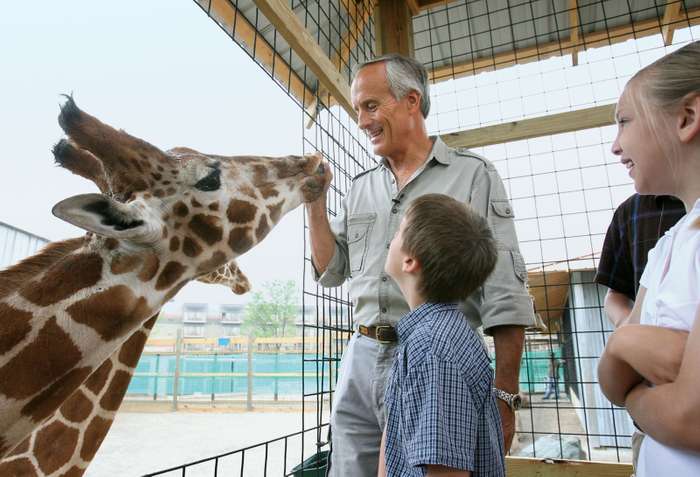
Jack HannaJack Hanna feeding a giraffe at the Safari Adventures Animal Park, Kalahari Resort, Sandusky, Ohio, 2009.Lisa DeJong—Kalahari Resorts/PRNewsFoto/AP Images
Many zoos publish scientific journals and periodicals, which range in their contents from the popular to the highly technical. Again, the Zoological Society of London led the way. Its “Proceedings,” now known as the Journal of Zoology, has appeared uninterruptedly since 1830.
In recent years a few zoos have intensified their efforts, frequently in cooperation with educational authorities, to provide an educational program for school children and students. Some zoos have full-time or voluntary guides on their staff, whose job it is to provide more information for visitors than can be given on labels attached to cages. Others meet this need by providing “talking labels,” prerecorded tapes operated by the visitors themselves.

captive breeding program; genetic diversityWhy genetic diversity is important when breeding animals in captivity. Behind the News (A Britannica Publishing Partner)See all videos for this article
Since World War II a number of zoos have been developed as breeding centres for animal species in danger of becoming extinct in the wild. Many threatened species have been saved by breeding in captivity. For example, in 1947 it was estimated that there were only 50 nenes, or Hawaiian geese, left on Hawaii and none anywhere else in the world. In 1950 two nenes were housed at the Wildfowl Trust at Slimbridge, England, and in 1951 a gander was hatched. The birds continued to breed successfully, and gradually the captive stock in Europe was spread over a dozen different menageries to minimize the risk of losses from disease or predators. Another species that has been saved by breeding in zoos is the European bison, or wisent, the last wild specimen of which died in 1925. Other species that zoos have helped to survive include Père David’s deer and many rare game birds. The increasing number of zoo births gives hope that zoos, rather than capturing wild animals for exhibition, will perhaps be able to restock the wild with zoo-born animals.
English[edit]
English Wikipedia has an article on:zoo
Wikipedia
Elephants in a zoo
Nounedit
zoo (plural )
- A park where live animals are exhibited
2013 July 26, Nick Miroff, “Mexico gets a taste for eating insects …”, in The Guardian Weekly, volume 189, number 7, page 32:The San Juan market is Mexico City’s most famous deli of exotic meats, where an adventurous shopper can hunt down hard-to-find critters such as ostrich, wild boar and crocodile. Only the city zoo offers greater species diversity.
.
-
(, ) Any place that is wild, crowded, or chaotic.
- The shopping center was a zoo the week before Christmas.
-
(US, military, ) The jungle
2013, E. E. «Doc» Murdock, My Vietnam War (page 152)
I’m not all that unhappy about being out on an actual patrol, but there’s a worried feeling wandering around the back of my mind, not exactly fear, more like a sort of lurking anxiety at being out in the dreaded jungle, the zoo, where the enemy hides..
Translationsedit
park where live animals are exhibited
|
|
Credits
New World Encyclopedia writers and editors rewrote and completed the Wikipedia article
in accordance with New World Encyclopedia standards. This article abides by terms of the Creative Commons CC-by-sa 3.0 License (CC-by-sa), which may be used and disseminated with proper attribution. Credit is due under the terms of this license that can reference both the New World Encyclopedia contributors and the selfless volunteer contributors of the Wikimedia Foundation. To cite this article click here for a list of acceptable citing formats.The history of earlier contributions by wikipedians is accessible to researchers here:
- Zoo history
- Menagerie history
The history of this article since it was imported to New World Encyclopedia:
History of «Zoo»
Note: Some restrictions may apply to use of individual images which are separately licensed.
